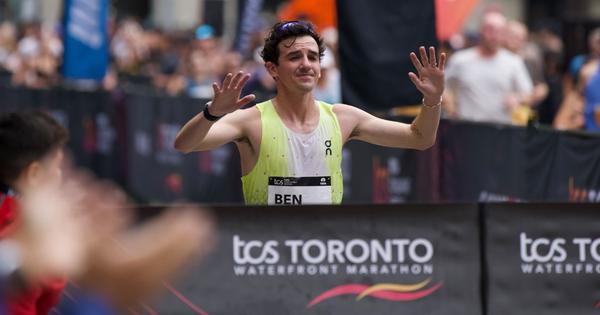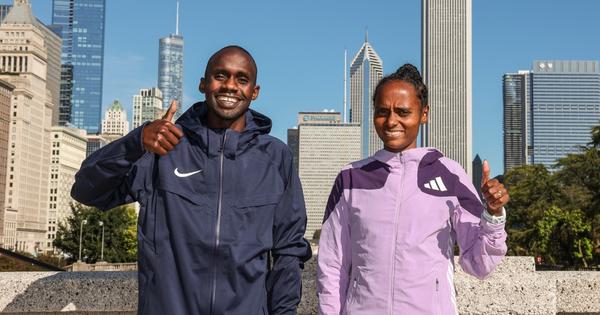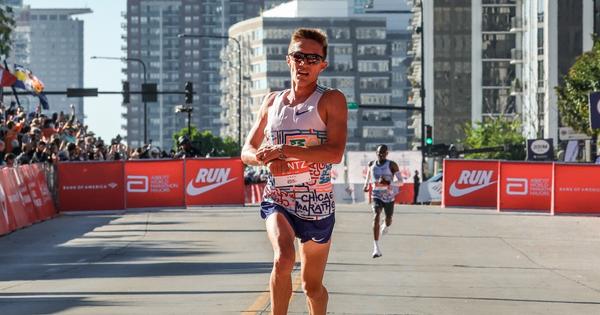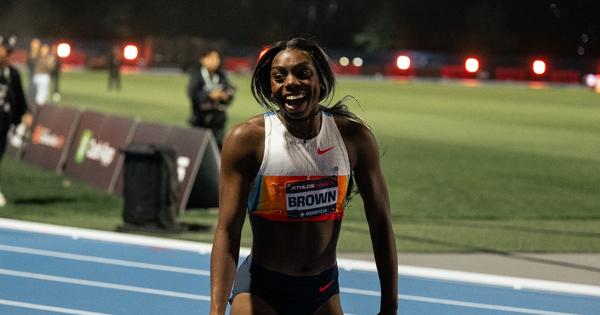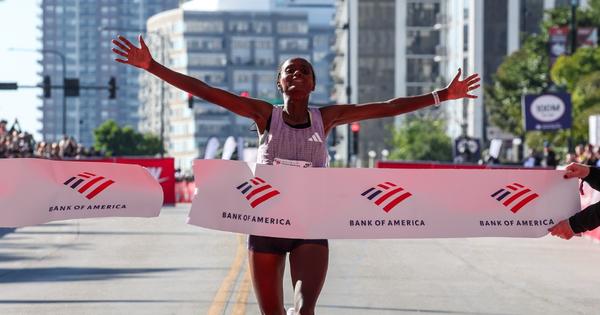By Paul Snyder
October 22, 2025
On the evening of January 14th, 2012, in front of a live Studio 8H audience and millions of viewers around the globe, Lana Del Rey made her national television debut and bombed spectacularly. Though not yet a household name, the artist originally known as Lizzie Grant was well on her way to becoming one, and her SNL debut was met with excitement and curiosity.
But she stunk the place up! She sounded awful and looked lifeless, and her performance was panned across the media landscape, even getting parodied by Kristin Wiig in subsequent SNL episodes. However, the album she was promoting, Born to Die, debuted a couple of weeks later to huge critical and commercial success.
Lana Del Rey is an enigmatic pop star, not a pro distance runner, but her story has a lot of lessons for today’s aspiring marathoners. When to make one’s debut on the Big Stage is one of the most challenging decisions any performer or athlete will make in their career… but also, if that debut is an abject flop, it’s not necessarily bound to define said career. In running, when it comes to a breakout performance with a potentially-big payday, there’s no bigger stage than the marathon.
There are basically three distinct schools of thought when it comes to professional distance runners racing their first marathons: make the jump as soon as you ink that first shoe deal; try to straddle both road and track simultaneously, hoping success in one feeds success in the other; or wait until you feel you’ve squeezed every bit of track juice out of your track potential before taking your talents to the tarmac.
The first camp is populated by your Kelvin Kiptums and your Brigid Kosgeis… your Conner Mantzes and your Des Lindens. Sure, this archetype might occasionally hop on the track, but it’s very clearly not the primary focus. Many of the top dogs globally—like this year’s Toronto Marathon champion, Shure Demise, who still holds the world junior record set back in 2015—leaned into their professional specialization at an early age and never looked back. More and more, plenty of the top Americans have looked to the asphalt as soon as their last NCAA race was uploaded to TFRRS. The benefits of this approach are three-fold: you start stacking specific fitness bricks way earlier, you learn how to race the marathon well before you reach your physical prime, and you shoulder lower expectations when you debut if you haven’t attracted attention by putting up crazy fast track times.
The second approach is perhaps the most pragmatic. Use a 10,000m block as a springboard for a half marathon, or vice versa—the training isn’t that fundamentally different, and you continue to gauge your potential on the track while giving the roads a taste. Wherever breakthroughs in training or racing take you, you can follow and remain flexible. Plus, if you flub up, you can always dismiss it as “not a goal race” then plow ahead to the next track/road effort. More and more athletes, from Sifan Hassan to Calli Hauger-Thackery, have managed to carve a path of simultaneous successes.
The third approach to marathon specialization is by far the trickiest, in a handful of ways. For one, if your debut is attracting any attention at all, it’s because you’ve got an established body of work on the track that indicates you’re going to be really good at the marathon. The weight of projected performance can be crushing. Then there’s the ticking clock element; the marathon can take a few cracks to get right, but if you’re only beginning to work out that particular puzzle in the second half of your career, you simply don’t get as many attempts. If it takes most elite marathoners three or so tries to figure the distance out, and an injury or two could knock a whole year’s worth of races off your menu.
On paper, Canadian marathon debutant and 1:01:00 half man Ben Flanagan falls into that third camp. And his run at this past weekend’s Toronto Marathon was enough to deliver a national championship, but the time—2:15:39—won’t turn many heads. The good news moving forward, however, is that at 30 years old, Flanagan appears to now be all in on the roads. His 2024 season saw him go 13:04.62 at BU and compete in the 5000m at the Olympics, and since then, he’s been a road warrior through and through. Running 61 in the half twice this season meant that the hopes were high for Flanagan’s marathon debut–would he join Cam Levins or Rory Linkletter in boosting Canada’s presence at any upcoming World or Olympic marathons? A less-than-perfect build and a 66:49-68:50 positive split suggests that the jury is still out.
Instead, we’ll have to remain patient and see what his next few attempts at 26.2 look like. There was another apt lesson to be learned on this front in Amsterdam last weekend, in the form of Joshua Cheptegei’s fifth-place, 2:04:52 clocking. Not since Mo Farah or Kenenisa Bekele have expectations been higher for a trackster-turned-marathoner. Cheptegei is the current 5000m and 10,000m world record holder, after all! But what we’ve seen so far is a 2:08:59 debut (37th place), a 2:05:59 follow up (9th place), and now another improvement in both time and position. Certainly a respectable resume by even the highest standards, but perhaps not the sub-2:01 world domination that some were hoping for.
Is he lining up and hitting home runs each time out? No. But is he steadily chipping away at things as he learns the marathon? Yes. Don’t close the book on Cheptegei, Flanagan, or anyone else making the switch after just the first few chapters. Just because we have a sense of an athlete’s ceiling doesn’t mean they’ll hit it quickly—and just because they log a few clunkers early on doesn’t mean they never will. And the lessons learned along the way could end up being the secrets to success when it all finally clicks.

Paul Snyder
Paul Snyder is the 2009 UIL District 26-5A boys 1600m runner-up. You can follow him on Bluesky @snuder.bsky.social.
